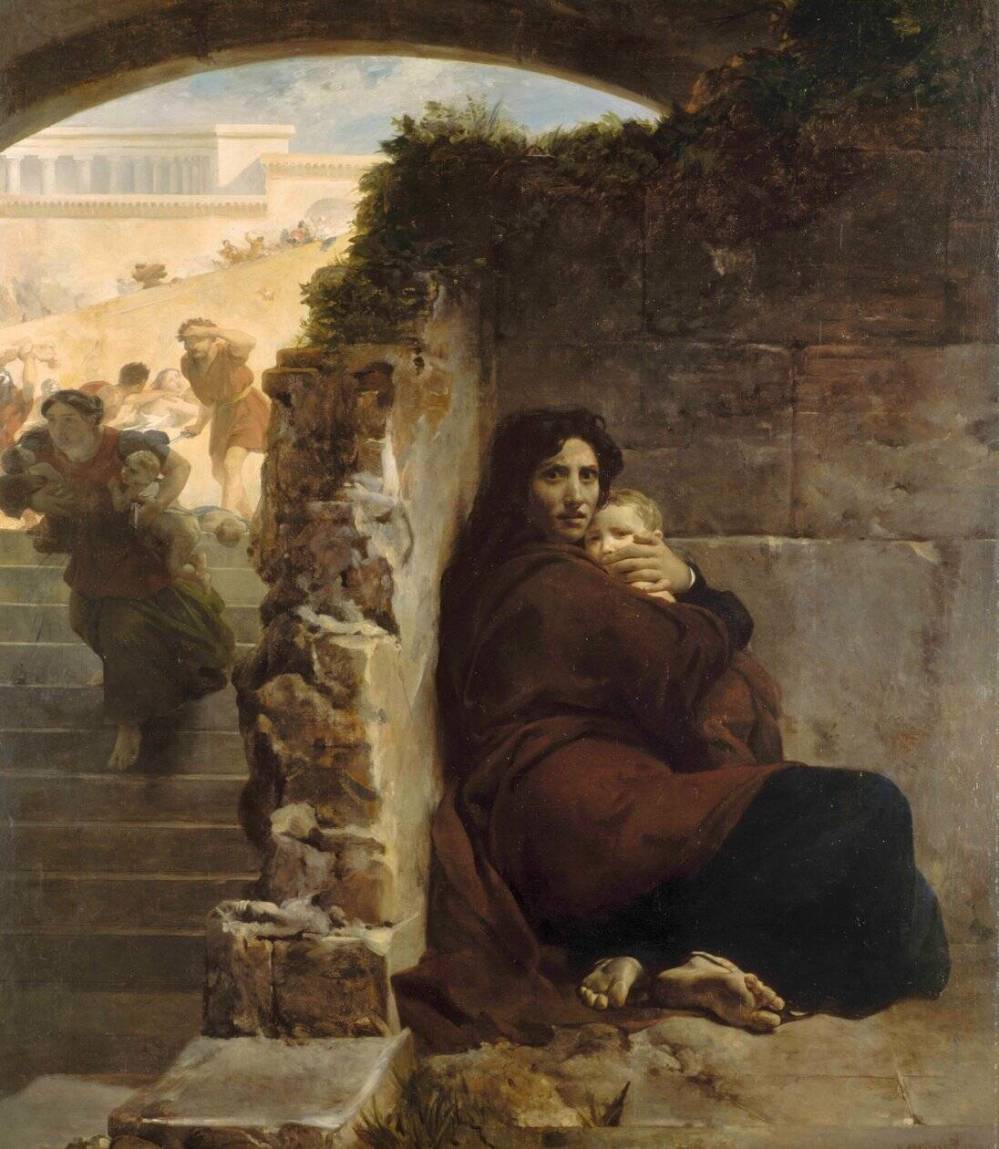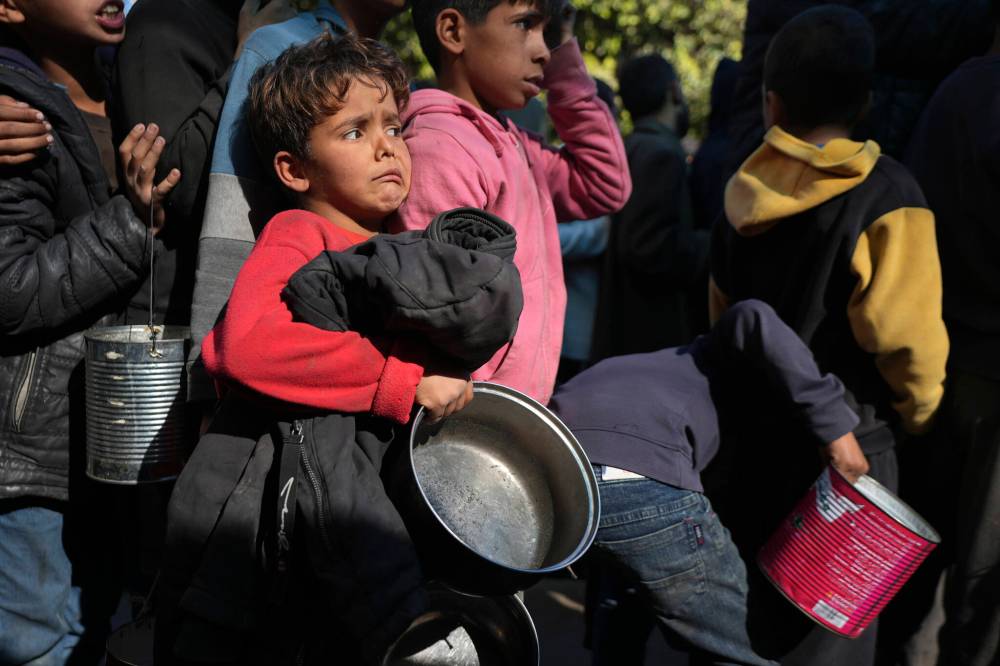Pray for peace
Too many innocent lives being lost in Gaza
Advertisement
Read this article for free:
or
Already have an account? Log in here »
To continue reading, please subscribe:
Monthly Digital Subscription
$0 for the first 4 weeks*
- Enjoy unlimited reading on winnipegfreepress.com
- Read the E-Edition, our digital replica newspaper
- Access News Break, our award-winning app
- Play interactive puzzles
*No charge for 4 weeks then price increases to the regular rate of $19.95 plus GST every four weeks. Offer available to new and qualified returning subscribers only. Cancel any time.
Monthly Digital Subscription
$4.99/week*
- Enjoy unlimited reading on winnipegfreepress.com
- Read the E-Edition, our digital replica newspaper
- Access News Break, our award-winning app
- Play interactive puzzles
*Billed as $19.95 plus GST every four weeks. Cancel any time.
To continue reading, please subscribe:
Add Free Press access to your Brandon Sun subscription for only an additional
$1 for the first 4 weeks*
*Your next subscription payment will increase by $1.00 and you will be charged $16.99 plus GST for four weeks. After four weeks, your payment will increase to $23.99 plus GST every four weeks.
Read unlimited articles for free today:
or
Already have an account? Log in here »
Hey there, time traveller!
This article was published 21/12/2024 (381 days ago), so information in it may no longer be current.
It’s a haunting painting. Titled Scène du massacre des Innocents (“Scene of the massacre of the Innocents”), it was painted by the French painter Léon Cogniet in 1824 and illustrates the killing of baby boys by Herod’s soldiers following the birth of Jesus (recorded in the gospel of Matthew 2:16-18). Today it hangs in the Musée des Beaux-Arts in Rennes, France.
In the painting, a terrified mother cowers in a corner, muffling the cries of her small infant son so they won’t be discovered as the soldiers — who are seen behind her, just out of her view, rampaging through Bethlehem as they chase down other desperate mothers carrying their babies in their arms.
What makes the painting so riveting is the mother’s gaze. She’s looking directly at the viewer, pleading for help but most certainly knowing it will not come — her son will be slaughtered.

Submitted
Scène du massacre des Innocents was painted by the French painter Léon Cogniet in 1824 and illustrates the killing of baby boys by Herod’s soldiers following the birth of Jesus.
Cogniet’s painting came to mind last week when I read about a horrifying new study that found that 96 per cent of children in Gaza feel that their death is imminent and almost half want to die as a result of the trauma they have been through.
The study, titled “Needs Assessment Study of Children with Disabilities, Injured and Separated or Unaccompanied,” was conducted by the Community Training Centre for Crisis Management (CTCCM) with support from the War Child Alliance, a Europe and U.S.-based organization that aims to serve war-impacted children.
In addition to the grim finding about children expecting to die, the study also found that 79 per cent of children in Gaza suffer from nightmares and 73 per cent exhibit symptoms of aggression as a result of their war-time experiences.
According to the study, most of the children in Gaza exhibit symptoms of aggression, fear, withdrawal, and severe anxiety, alongside a pervasive sense of hopelessness.
The study also revealed that 88 per cent of families have been displaced multiple times, with 21 per cent forced to move six or more times. At the same time, an estimated 17,000 children in Gaza are orphaned or otherwise separated from their parents, although the study notes the real number may be much higher.
“For children in Gaza, nowhere is safe,” said Rob Williams, War Child Alliance CEO. “They have seen homes destroyed, loved ones killed, and schools turned to rubble. Even so-called evacuation zones are not spared from bombing. The mental health of Gaza’s children is under constant attack.”
Added Helen Pattinson, chief executive of War Child UK: “This report lays bare that Gaza is one of the most horrifying places in the world to be a child. The international community must act now before the child mental health catastrophe we are witnessing embeds itself into multi-generational trauma, the consequences of which the region will be dealing with for decades to come.”
As a father — as a human being — I can’t comprehend this. Not only the impact on the children, which is horrible in itself, but also on their parents. Like the mother in Cogniet’s painting, they too may see no way to save their children, no way to avoid seeing them killed or maimed by forces beyond their control, or, as the study stated, psychologically damaged, perhaps for life.

Abdel Kareem Hana / The Associated Press files
Palestinian children queue for food in Deir al-Balah, Gaza Strip on Dec. 13.
And before people start sending me more emails saying “but they started it” or “what about the Israeli hostages,” let me say as clearly as I can: The Oct. 7 Hamas attack was brutal and horrific and unjustified and all the hostages should be freed. But surely we can all agree that there’s been enough death by now, and that this modern day slaughter of the innocents in Gaza needs to stop.
In the church calendar, Dec. 28 is the fourth day of the 12 days of Christmas. It’s the feast day of the holy innocents — the day when Christians are asked to remember the children murdered by Herod’s soldiers over 2,000 years ago.
Maybe this year, Christians can take some time to contemplate Cogniet’s frightful painting on that day and then, in their hearts, decide to meet the gaze of every Gazan mother and father desperately trying to save the lives of their children during this cruel war — and also every Israeli parent who lost a child during the Oct. 7 attack, along with every other parent in places other countries who are either mourning a child killed in war or fearful for their futures.
And if we don’t know what to pray, perhaps we can use the words of Pope Francis. After viewing a nativity scene at The Vatican, he made an impassioned speech for an end to conflict in the Middle East. “With tears in our eyes, let us raise our prayer for peace,” he said. “Brothers and sisters, enough war, enough violence!”
faith@freepress.mb.ca
The Free Press is committed to covering faith in Manitoba. If you appreciate that coverage, help us do more! Your contribution of $10, $25 or more will allow us to deepen our reporting about faith in the province. Thanks! BECOME A FAITH JOURNALISM SUPPORTER

John Longhurst has been writing for Winnipeg's faith pages since 2003. He also writes for Religion News Service in the U.S., and blogs about the media, marketing and communications at Making the News.
Our newsroom depends on a growing audience of readers to power our journalism. If you are not a paid reader, please consider becoming a subscriber.
Our newsroom depends on its audience of readers to power our journalism. Thank you for your support.
The Free Press acknowledges the financial support it receives from members of the city’s faith community, which makes our coverage of religion possible.



